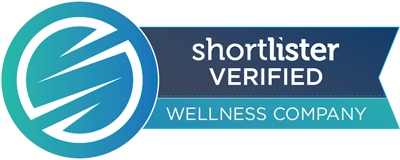
While remote work seemed like a temporary solution for COVID-19 health and safety protocols, it could be an organizational trend that continues beyond social distancing restrictions. According to a McKinsey survey, employees who are operating under remote work conditions have experienced positive effects on their daily work. Of the 800 U.S.-based employees who participated in the study, many have displayed a stronger sense of well-being and engagement than those in less flexible, non-remote positions. That same study, however, also revealed that 80% of its participants felt that the crisis has materially affected their daily lives, sometimes in unproductive ways.
As we enter the next phase of post-pandemic life, businesses will have to learn to accommodate remote work environments while also addressing the needs and well-being of their employees. The aforementioned study highlighted that more involvement led to an increase in employee engagement and well-being of 32.4% and 52.3%, respectively. Both of these employee experience factors, when supported effectively, can significantly contribute to at-work productivity, employee retention, and cost-efficiency. This begs the question: How do you optimize your employee involvement? The answer is through a wellness-support workplace community.

One of the greatest obstacles for community development in the workplace is the lack of in-person interactions. Being able to socialize with coworkers through group activity is one of the best ways to develop a workplace community and facilitate involvement. The problem is that remote work settings don’t lend themselves well to these types of activities. This is because video chat platforms are not always conducive to creating shared experiences. How can organizations create a workplace community that is engaged and supported within a remote work environment?
With Sprout, organizations can facilitate different types of wellness-oriented programming that encourage communication, team building, and goal setting, all factors which positively impact remote work productivity. Sprout users track activities to help reach wellbeing goals, are awarded points, unlock badges and earn rewards. This gamification of workplace wellness helps motivate employees to participate and reach their health goals. The Sprout leaderboard also adds in an element of friendly competition. Filterable by department, location, region or company, the leaderboard is where an individual’s points can be compared to one another to inspire both personal and team bests.

While every Sprout participant receives recommended goals based on their individual profile, users can create wellness challenges for themselves and their team members to complete as an added level of involvement. For example, the marketing team might be reflecting on how little they leave their house each day now that they no longer need to commute to work.
A group member can propose a challenge for their team to participate in a 15 minute walk at least once per day. A walking challenge is easily set up on the Sprout platform and participants either manually track their walks, or simply sync their wearable device or app for seamless tracking. Team activities like this not only promote employee wellness, they also evoke a sense of community support. Importantly, employees who feel supported have a better relationship with their organization, driving both productivity and retention.
To learn how you can leverage the benefits of Sprout, book a demo today.
To learn how you can leverage the benefits of Sprout, book a demo today.
